[dropcap style=”font-size:100px; color:#992211;”]A[/dropcap] registered charity, a resource for research, a permanent collection, commissioned and collaborative works.
The David Roberts Art Foundation is more than a few gaudy oils scattered around some white walls, pricelist on demand. Curator Vincent Honoré takes a moment to answer Trebuchet’s questions.
What first drew you to art?
The impossibility of being satisfied with anything else!
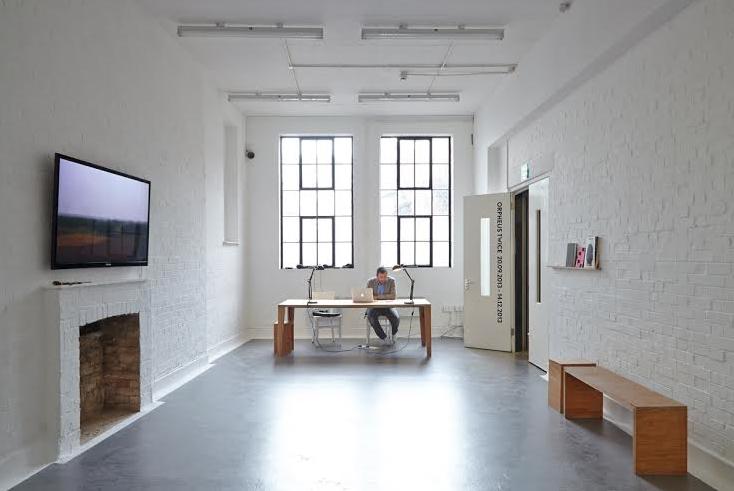 2013-09-18: Curator Vincent Honoré in the exhibition Orpheus Twice with an installation by Juliette Blightman. Courtesy Image: Matthew Booth.
2013-09-18: Curator Vincent Honoré in the exhibition Orpheus Twice with an installation by Juliette Blightman. Courtesy Image: Matthew Booth.
How did your gallery start?
In 2007, collector David Roberts established a non-profit foundation: David Roberts Art Foundation (DRAF) started to operate in a space in Fitzrovia, and, in 2012 we moved to a larger building in Camden with five large galleries and spaces for events and discussions.
How did your involvement begin?
Soon after establishing the Foundation, David Roberts asked me to direct it. He was aware of my previous work at the Palais de Tokyo in Paris and at Tate Modern, where I worked as a curator from 2004 to 2007 immediately prior to joining DRAF.
What is the vision for this gallery?
DRAF is a platform for producing and sharing art and knowledge. We invite artists and curators to use the foundation and its collection as a tool.
 Mark-Blower-022:A House of Leaves. Second Movement. Installation View. From left to right: Ben Cain, What Will We Do For Work Now, 2012; Keith Coventry, 1938, 1994-2006. Image Courtesy: Mark Blower
Mark-Blower-022:A House of Leaves. Second Movement. Installation View. From left to right: Ben Cain, What Will We Do For Work Now, 2012; Keith Coventry, 1938, 1994-2006. Image Courtesy: Mark Blower
Which artists typify the vision you have for your gallery?
Oscar Tuazon, Nina Beier, Rodney Graham, Phyllida Barlow, Jason Dodge, Sarah Lucas, Pierre Huyghe, Danai Anesiadou, Benoit Maire, Juliette Blightman, Danh Vo and all of the artists we worked with.
What do you dislike most about art?
The art world has become an very big industry, as such it includes different sub-trends and dynamics that are very far from where I situate myself. Some aspects – such as Marina Abramovic with Lady Gaga or Jay-Z – I don’t find interesting. The market attracts more and more accessory and opportunist professions that blur the definition of what art is.
How would you define artistic controversy?
Merely as a marketing strategy. There is not such thing as controversy in contemporary art: controversy in essence belongs to the modernist avant-gardes of the early 20th century.
Do you think that controversy in is a positive force in art or a conceptual red herring?
Controversy is a capitalist marketing strategy, and has to do with the diffusion, communication and market of the art object. It has little to do with contemporary art per se.
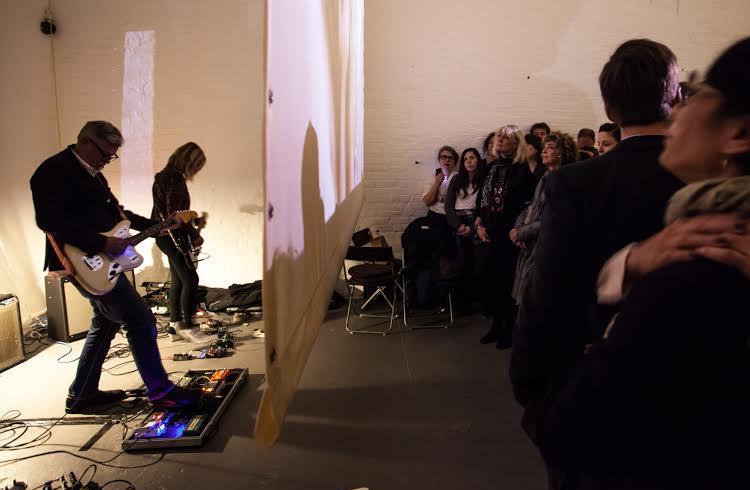 Rodney Graham and Kim Gordon performing at DRAF. October 2013. Image Courtesy: Josh Redman
Rodney Graham and Kim Gordon performing at DRAF. October 2013. Image Courtesy: Josh Redman
What’s been your biggest challenge?
To re-invent ourselves every season, and keep up-to-date with the younger generations of artists and curators (now that I, for one, have passed…30).
What’s been your biggest success?
Probably setting up DRAF, and moving to a bigger building, opening with a 6-month performative exhibition. My Christmas lunch starter was also an absolute killer!
Abstract Cabinet: Artists Anthea Hamilton; Nicholas Deshayes; Prem Sahib; Adham Faramawy; George Henry Longly; and Celia Hempton posing in the exhibition Abstract Cabinet. Image courtesy: Plastiques Photography.
Who are your five favourite artists and which pieces of theirs do you admire?
Pierre Huyghe. His film The Host and the Cloud is a radical and risky transition in his career, in which he revisits his past influences into a sort of exorcism, announcing a new exciting departure for an artist I consider already historical.
Danh Vo: We The People. The impact of immigration is central to the Danish/Vietnamese artist’s work – his family’s departure from Vietnam and its impact on Vo’s life has lead to an oeuvre filled with ruminations on the nature of displacement. Vo’s long-term project reconstructing the Statue of Liberty on a 1:1 scale in fragments scattered around the world emphasises the abstract nature of the concept of freedom.
Louise Bourgeois: her works from the 60s/early 70s made with plaster and latex contributed to set up a radical shift in how sculpture could be understood, as well as the only way to re-inform Surrealism at the time. She went from rupture to rupture in her artistic career, always demonstrating the most engaging creativity. The drawings and works with fabric are also extraordinary.
Samuel Beckett, and in particular Quad (as diagram, a text and a video). His work asks: What can an image do? When does an image become possible? What does it mean to exhaust an image? What is an exhausted image? In Quad, the image exhausts significance; it thwarts its aim and corrupts its order. It is, fundamentally, a hiatus; it embraces disjunction and heterogeneity.
I believe, at an age when argentic images and films are disappearing, this work is fundamental.
Sarah Lucas: all of her works! Sarah is one of the most brilliant sculptors of her time. She has shown us how sculpture can be re-informed with energy, humour, political engagement, etc. She has this unique way of putting together exhibitions which become what she calls “situations”, namely an environment where the audience becomes a co-producer.
Who do you think is the artist to watch at the moment and why?
At the moment, I am particularly looking at the sculptures and videos of Michael E. Smith. They translate a sense of loss and ruin which echoes, often with humour, our current state of idealogical uncertainty.
What does the future hold?
How could I know?
Sidebar Image: Mark Blower 0065: A House of Leaves. First Movement. Installation View. Kris Martin, Mandi VIII, 2006; Matthew Day Jackson, April 10, 1964, 2011. Image Courtesy: Mark Blower
[button link=”http://davidrobertsartfoundation.com/” newwindow=”yes”] David Roberts Art Foundation[/button]

The aim of art is to represent not the outward appearance of things, but their inward significance. – Aristotle

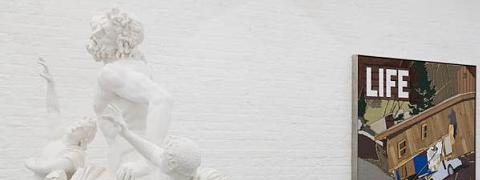


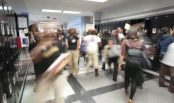





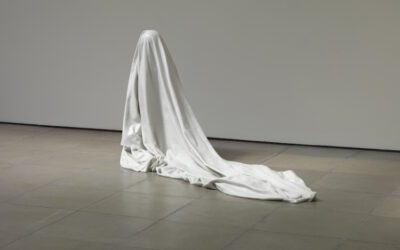

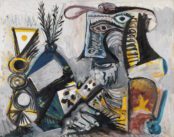






![L'Esprit comique [Der komische Geist], René Magritte, 1928. Courtesy Sammlung Ulla und Heiner Pietzsch, Berlin © 2025, ProLitteris, Zurich Photo Credit: Jochen Littkemann, Berlin](https://b276103.smushcdn.com/276103/wp-content/uploads/2025/07/ew11_0098489_2025-05-12_web-140x174.jpg?lossy=1&strip=0&webp=1)

